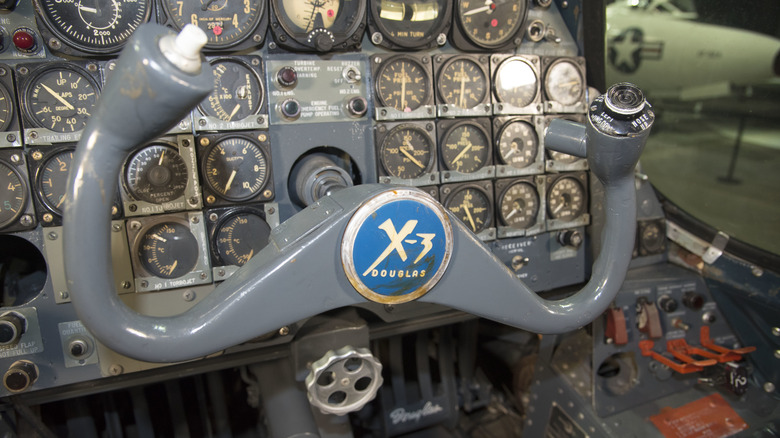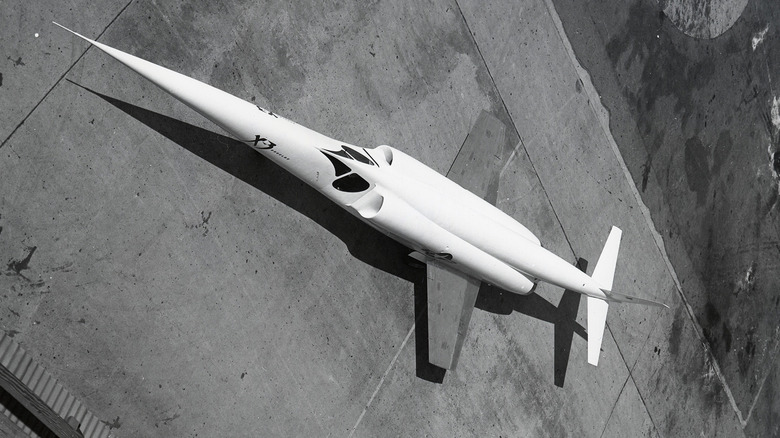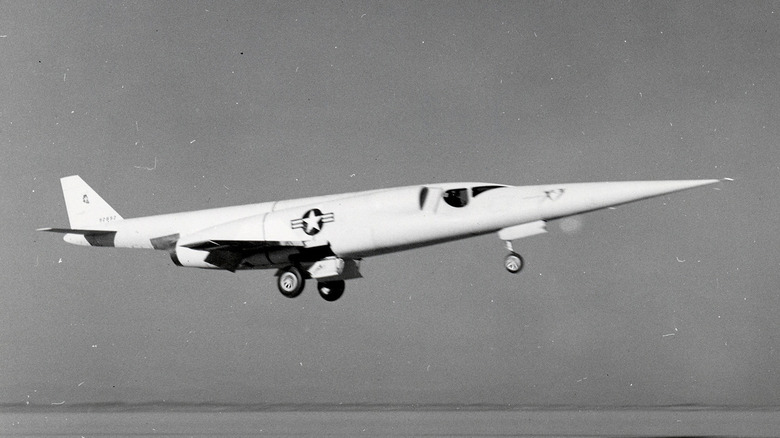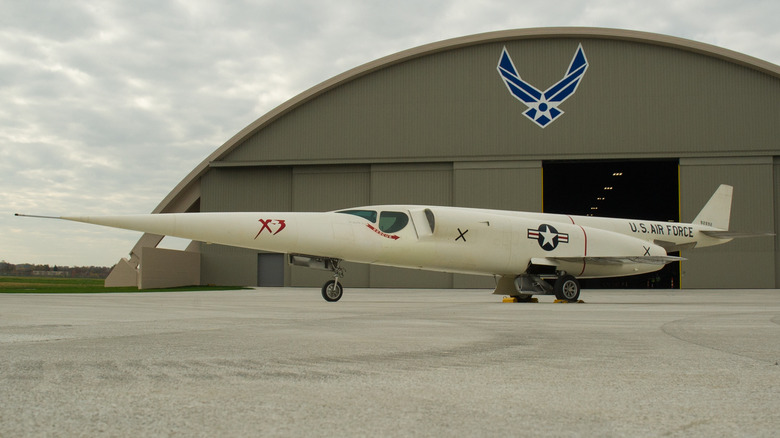The Strange Supersonic Aircraft That Never Reached Its Full Potential
The Douglas X-3 Stiletto was a sleek experimental aircraft built to explore new aerodynamic designs and technologies for sustained supersonic flight. The X-3 project took birth in the late 1940s and spanned into the '50s, an era when the jet engine grew as a viable propulsion system for military aircraft. Compared to rocket-powered flights, jet engines provided a cheaper, safer, and more accessible method of propulsion. But pioneering jet-propelled aircraft like the F-86 Sabre and MiG-15 had one big limitation — they could only break the elusive sound barrier (Mach 1) in a dive.
Hence, the next milestone in aviation was to build an aircraft that could take off from the ground, climb to a high altitude, reach and sustain twice the speed of sound (Mach 2.0), and land back safely, all under its own power. This ambitious goal led to the birth of the Douglas X-3 Stiletto, the construction of which was approved in the summer of 1949.
A bold design to match the ambitious targets
Built by the Douglas Aircraft Company, the X-3 Stiletto had an unorthodox, almost futuristic design. Maj. Charles E. Yeager, the first pilot to break the sound barrier, was in the inspection team for the aircraft and influenced its design. The X-3 had short, stubbed wings and a long nose, making the overall structure mimic a stiletto heel. A pressurized cockpit was embedded inside its slender fuselage, offering a limited view to the pilot who sat in a reclined, downward ejecting seat, which doubled as an electronically controlled lift.
The X-3 was also the first aircraft to use titanium in its construction in a bid to explore the viability of the element in airframes. Also nestled in the cramped fuselage were the two Westinghouse J34 turbojets powering the X-3 toward its ambitious goals. These J34s were actually underpowered substitutes when the originally planned higher-thrust J36s failed to meet the program's demands and timelines.
The X-3 Douglas had severe limitations
Despite initial hiccups, the Douglas X-3 made its first official flight on October 20, 1952. But the limitations of the aircraft surfaced shortly thereafter. Testing showed that the X-3 was severely underpowered. The substitute J34 engines could not power its sleek design. Its first supersonic flight clocked Mach 1.1 but was made possible only after it made a 15-degree dive, according to NASA. In its fastest flight, the X-3 could only manage Mach 1.208, that too on a 30-degree dive. Moreover, the aircraft had a takeoff speed of nearly 260 knots, which is significantly higher than typical takeoff speeds.
This was further aggravated by the stubbed wings, which reduced lift and were prone to structural problems. The aircraft was also unwieldy, especially at slow speeds. This not only introduced trouble while landing and taking off but also in flight.
Test pilot Joseph A. Walker had a near-lethal experience on October 27, 1954, when at 30,000 feet and Mach 0.92, the X-3 was subjected to an abrupt left roll. Walker briefly lost control of the aircraft during this roll coupling and experienced high g-forces before he could bring it under control. Post-flight analysis showed that the X-3 airframe had been subjected to its maximum load. Any further stress would have caused the aircraft to break up.
The end of an ambitious project
The unexpected issues experienced during the roll was the final nail in the coffin of the X-3 project. The aircraft was grounded for a year after this roll coupling incident and made only 10 more flights before being decommissioned from service entirely. The X-3 was subsequently retired to the National Museum of the U.S. Air Force after it failed to meet its ambitious targets and provide flight data for a Mach 2 cruise.
Despite this, the Douglas X-3 has a special place in aviation history. The stubbed wing design later inspired the supersonic F-104 Starfighter and the high take-off and landing speeds led to developments in tire technology. It had significant contributions to the development of high-speed aircraft as well. Walker's terrifying roll coupling episode also started an official research program to find its root cause and its solutions, and the X-3 provided vital test data on the phenomenon.



